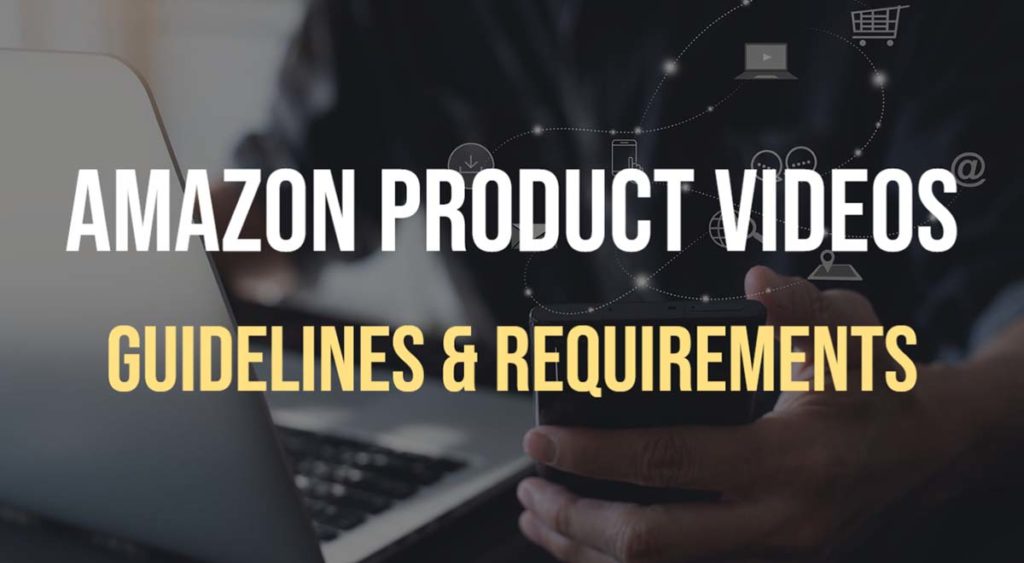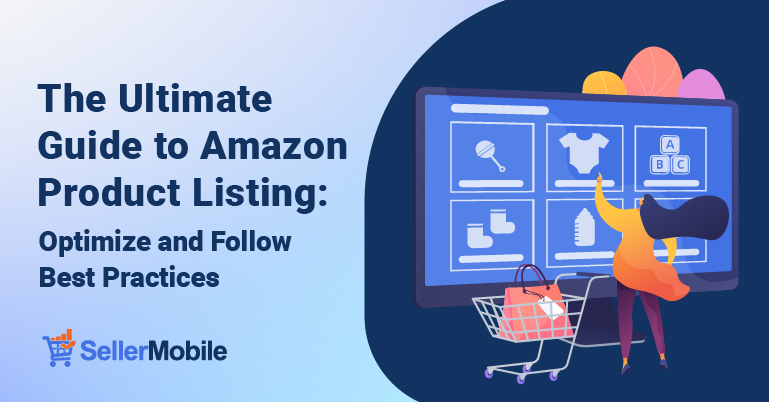Unlocking the Secrets of Amazon Product Listing Optimization .Have you ever wondered why some products consistently dominate Amazon searches, while others struggle to gain attention? Understanding the intricacies of Amazon’s ranking system can be perplexing, but there are key factors that influence product performance and sales.

Amazon Product Listing Optimization is crucial for success on Amazon, as it directly impacts exposure and conversion rates. In this comprehensive guide, we will delve into the realm of Amazon SEO and provide actionable guidelines for optimizing your product listings to drive sales and enhance conversion rates.
The Significance of Amazon Product Listing Optimization and Its Impact

An Amazon product listing serves as a comprehensive guide for customers, providing vital information such as product descriptions, images, videos, and customer reviews. It is the gateway through which customers make purchasing decisions.
With over 353 million items available on Amazon, standing out from the crowd is essential. Through effective optimization, you can create a personalized and memorable shopping experience for customers while enhancing your product’s visibility. By aligning your branding, messaging, and reviews, you establish consistency and gain prominence in Amazon’s search engine results page.
Optimizing your Amazon product listings is crucial for driving traffic and increasing conversion rates. It is a strategic process that ensures your product stands out among the vast competition on Amazon. By optimizing various elements, including product titles, descriptions, customer reviews, advertising strategies, and keyword visibility, you can position your product for success.
By understanding the importance of Amazon product listing optimization and implementing effective strategies, you can increase your product’s visibility, attract more customers, and drive sales in the highly competitive Amazon Marketplace.
Understanding Amazon’s A9 Algorithm and Its Impact on Product Rankings

Amazon’s A9 algorithm is a powerful search engine algorithm specifically designed to drive product searches within the Amazon marketplace. Over the years, it has evolved into a sophisticated and complex system, continuously improving its search capabilities.
Developed by A9.com, a subsidiary of Amazon, this algorithm fuels the company’s search engine advertising technology. Although A9.com no longer operates as an independent brand, its algorithm plays a vital role in determining product rankings on Amazon.
The Amazon A9 algorithm is a crucial factor that sellers must consider when aiming to improve their rankings. This AI-based framework swiftly analyzes vast amounts of marketplace data to present customers with the most relevant product choices. Relevancy is a fundamental principle that guides the algorithm, rewarding optimized listings that align with customers’ search queries.
The algorithm dynamically adapts to the evolving search patterns of Amazon’s customers, showcasing what they are actively seeking. Leveraging structured data from the product catalog, it combines various relevant features to deliver personalized search results for individual shoppers. Furthermore, the algorithm continuously learns from past search patterns, ensuring that it highlights important results for customers.
By understanding and optimizing for the Amazon A9 algorithm, sellers can enhance their product rankings, increase visibility, and attract more customers. Utilizing SEO best practices and ensuring strong relevance to customers’ searches are essential strategies for success in the Amazon marketplace.
Key Factors Influencing the Amazon A9 Algorithm

Understanding the factors that influence the Amazon A9 algorithm is crucial for optimizing your product listings and achieving higher rankings. While the exact workings of the algorithm are not publicly disclosed, we have identified several important elements that contribute to the success of your conversions and sales. Here are the key factors to consider:
1. Parent-Child Products:
Utilize Amazon’s parent/child product functionality to showcase variations of the same product on a single page. This increases visibility and improves rankings, especially for products with multiple options such as different colors, sizes, or scents.
2. Text-Match Relevance:
Relevancy is paramount in determining rankings. Optimize your product listings with engaging and keyword-rich titles, descriptions, and bullet points. This enhances the algorithm’s understanding of your product’s relevance to customer search terms.
3. Sales Velocity:
The A9 algorithm takes into account the sales volume and quantity of items per transaction compared to competitors. A higher sales velocity improves rankings, so focus on driving sales and outperforming your competition.
4. Stock Availability:
Ensure your products are consistently in stock to maintain rankings. Out-of-stock items can lead to downgraded rankings and hinder customer discoverability. Timely restocking is essential for maintaining a healthy seller account and optimizing sales volume.
5. Pricing:
Balancing competitive pricing with accurate representation of your product is crucial. The A9 algorithm considers pricing to determine product rankings. Strive to offer competitive prices while maintaining quality and value.
6. FBA (Fulfillment by Amazon):
Leverage the benefits of FBA, such as increased exposure on search pages and improved chances of winning the Buy Box. FBA offers advantages like easy returns, shorter delivery times, and reliable customer service, all of which contribute to higher sales velocity and improved conversion rates.
7. Advertising:
Allocate a portion of your budget to advertising campaigns to increase sales velocity. Well-executed advertising efforts can drive more visitors to your product listings, leading to increased sales and improved rankings.
8. Customer Reviews:
Positive customer ratings and reviews are influential in boosting overall sales. Encourage satisfied customers to leave reviews and engage with potential buyers by promptly addressing their questions and concerns in the Q&A section. Strive for favorable reviews while actively managing and minimizing negative feedback.
9. High-Resolution Images:
Visually appealing, high-quality images significantly impact conversion rates and rankings. Capture bright, clear images from multiple angles to provide shoppers with a comprehensive view of your product. Aim for images with at least 1280 pixels on the longest side and consider ultra-HD or 3D rendering for an authentic and visually appealing shopping experience.
10. Promotions:
While promotions can generate immediate sales and conversions, use them judiciously as they may have temporary effects on rankings. Focus on sustainable factors like text match relevancy and product availability for long-term success.
11. Amazon A+ Content:
Enhance your product listings with A+ content, as it has been shown to increase sales by 3-10%. Incorporate multimedia elements to provide detailed information and improve customer satisfaction.
12. Brand and Manufacturer:
Including your brand name is essential for brand recognition and easy customer searchability. Mentioning the brand or manufacturer increases the chances of your products being found and helps build credibility.
13. Category:
List your products under the most specific category to ensure easy discovery by customers searching within a particular niche. Avoid being too broad in your categorization to improve visibility and attract relevant buyers.
By considering and optimizing these factors, you can enhance your product rankings, increase visibility, and ultimately drive more conversions and sales on the Amazon platform.
Ensuring the Best Amazon Product Listing Optimization: Key Factors Revealed

When it comes to achieving top-performing listings on Amazon, SellerApp has conducted extensive research and analysis to uncover the secrets of successful optimization. Through a comparison of two listings—one with well-optimized features and the other lacking optimization—we have identified the key tricks to improve your rankings. Utilizing our suite of Amazon tools, we have gained valuable insights into the factors that can make or break your product listing optimization.
So, what did our analysis reveal? We closely examined a highly successful product listing on Amazon and identified nine sets of parameters that significantly impact the optimization process. These parameters are essential to understand and optimize to achieve optimal results. Let’s delve deeper into each parameter to uncover the secrets of its success:
1. Listing Quality:
A well-crafted and engaging listing is crucial for attracting customers. Focus on creating high-quality content that effectively highlights the unique features and benefits of your product.
2. Strategic Keyword Usage:
Carefully select and incorporate relevant keywords throughout your listing to improve discoverability and visibility in Amazon’s search results. Strategic keyword placement is essential for attracting organic traffic.
3. Image Optimization:
Utilize a compelling and visually appealing set of product images. Optimize the number and quality of images to provide customers with a comprehensive view of your product.
4. ASIN Index:
Ensure that your product is accurately indexed by Amazon’s ASIN (Amazon Standard Identification Number) system. Proper indexing increases the visibility of your product in relevant search results.
5. Product Title Character Count:
Craft a concise and keyword-rich product title within the character limit specified by Amazon. Utilize the available space effectively to convey key product information and entice potential buyers.
6. Effective Bullet Points:
Make the most of your bullet points to highlight essential product features, benefits, and specifications. Clearly communicate the unique selling points to engage customers and improve conversion rates.
7. Compelling Product Descriptions:
Craft informative and persuasive product descriptions that effectively convey the value proposition of your product. Emphasize key features and benefits while maintaining readability and engagement.
8. Reviews and Ratings:
Encourage customers to leave positive reviews and ratings for your product. The number and quality of reviews contribute to building trust and credibility, which in turn improves conversion rates.
9. Fulfilled by Amazon (FBA) Status:
Consider utilizing Amazon’s FBA program to enhance your listing’s performance. FBA provides benefits such as reliable fulfillment, faster delivery, and increased customer trust.
By optimizing each of these parameters, you can significantly improve your product listing’s visibility, discoverability, and ultimately increase sales. Our comprehensive analysis has shed light on the key factors that contribute to successful Amazon product listing optimization, empowering you to achieve exceptional results in your online business.
How to Optimize Your Amazon Product Listings for Higher Rankings and Sales?
Achieving higher rankings in Amazon’s search results is crucial for increasing sales and boosting your bottom line. But how can you achieve those top positions? To succeed in this competitive marketplace, you need to focus on several key factors that contribute to a successful product listing, including keyword optimization, high-quality product images with excellent lighting, well-optimized titles and descriptions, and the use of AI photo editor tools to enhance visual appeal. Let’s delve deeper into these essential aspects to equip you with all the necessary tools for success on Amazon.
When we talk about “optimization,” we emphasize two critical aspects:
1. Optimizing with Potential Keywords: Choose keywords strategically to rank higher for the search terms that buyers frequently use.
2. Optimizing with the Right Elements: Craft your product listing with compelling images, titles, and descriptions to achieve higher conversion rates.
Beyond merely having an optimized product listing, it’s crucial to understand Amazon’s A9 algorithm. If buyers feel your product isn’t up to par, even the most optimized listing won’t lead to sales. The quality of your product, its features, and customer reviews all play a significant role in making your listing successful.
Before diving into the actual optimization process, start with an essential step: keyword research.
1. Perform Keyword Research:
While Google Keyword Planner is useful, consider using a keyword tool that provides specific Amazon search box stats. Conduct thorough keyword research to discover top-searched keywords on Amazon related to your product. Track keywords based on your product category or type.
Amazon Product Listing Optimization:
1. Number of Product Images:
Ensure your product images are clear and of high quality to improve conversions. Aim to include around 5-6 images, with the main image on a clear white background. Utilize lifestyle images to showcase the product’s features. Follow these dos and don’ts for optimal product images:
– Do: Use bright white light, focus on the product, and make it easily recognizable. Include infographics to highlight product benefits.
– Don’t: Add logos, texts, or watermarks, show multiple images for multipacks, or include unrelated items in the main image.
2. Product Title:
Craft a product title that is at least 80 characters long, capitalizing the first letter of each word. Include potential keywords using dashes or pipes to enhance readability. Mention essential details like color, model number, series, and quantity if applicable. Avoid subjective adjectives and irrelevant words.
3. Product Description:
Create a concise, clear, and descriptive product description. Highlight important features and capitalize the first letter of every sentence. Avoid using subjective terms or promotional information. Keep the description around 250 words.
4. Product Features:
List product features using bullet points, focusing on essential distinctions from competitors. Limit the bullet points to 5 or 6. Incorporate call-to-action words and relevant keywords.
5. Product Ratings and Reviews:
Positive reviews significantly impact product ratings and sales. Encourage customers to leave honest reviews. Strive for a rating between 4 and 5 stars, and address any negative feedback or issues proactively.
6. Search Terms:
In the listing’s back-end, include additional primary and secondary keywords, abbreviations, misspellings, and variations that you couldn’t fit in the title.
7. Reduce Exit Rate:
Keep customers engaged and interested in relevant products to reduce exit rates, which can affect your product’s ranking.
By following these optimization strategies, you can improve your Amazon product listings and increase your chances of ranking higher in search results, ultimately leading to more sales and success on the platform.
How to List a New Product on Amazon: A Step-by-Step Guide

Listing your new product on Amazon requires careful consideration of the following key factors:
1. Determine the Type of Listing:
– If you are the sole seller of the product on Amazon, create a new listing.
– If multiple merchants are selling the same item, use the existing shared Amazon listing instead of creating a new one.
Follow these steps to create a new listing:
Step 1: Access Your Seller Central Account:
Log in to your seller central account and navigate to the dashboard.
Step 2: Go to Inventory:
From the main menu, click on “Inventory.”
Step 3: Add a Product:
A sub-menu will appear; select “Add a Product” from the list.
Step 4: Provide Product Details:
You will be directed to a detailed page where you can add your product.
Step 5: Choose Existing or Create New:
Decide whether to select an existing item from Amazon’s catalog or create a new product listing if it’s not available on Amazon.
Step 6: Select the Product Category:
Categorize and subcategorize your item to accurately classify it. If unsure, consider the categories used by other sellers offering similar products.
Step 7: Fill in Listing Information:
Once you’ve chosen the appropriate product category, you can enter the necessary details for your product listing.
Step 8: Optimize Listing Content:
Provide a compelling and informative product title, description, and images. These elements play a crucial role in attracting and convincing buyers to purchase your product.
Step 9: Complete Required Tabs:
Fill in the details in each tab, including Variations, Offer, Images, Description, Keywords, and more. Pay attention to any red warning symbols indicating missing essential information needed for the listing to be published on Amazon Marketplace.
If you encounter any difficulties in publishing your product listing, you can seek assistance from the Amazon Seller Support team. Simply click on the “Help” link located at the top right of the page and follow the provided steps to access the necessary support.
Amazon Product Video Guidelines: Boost Sales with Engaging Videos

Including videos in your Amazon product listings is crucial for attracting and converting shoppers. In fact, a recent survey revealed that 90% of Amazon customers consider videos instrumental in their decision-making process. Videos provide a visual demonstration of your product’s functionality, significantly increasing conversion rates.
To add a product video to your listing, follow these steps. But first, let’s explore the different types of videos you can create and their benefits:
1. Product Highlighter Video: Showcase your product’s key features in a clean, simple manner. This video typically presents a 360° view of the product against a plain, white background.
2. Customer Experience Video: Authentic videos captured by reviewers, fans, or customers offer a realistic perspective that helps potential buyers understand the product better.
3. Product Explanatory Video: Craft a high-quality video with an engaging script to highlight the benefits and usage of your product effectively.
Methods to Add a Video to Your Amazon Listing:
1. A+ Content Manager (Enhanced Brand Content): Access the A+ content manager if you’re a professional seller registered with a brand. This feature allows you to incorporate a video into your listing.
2. Amazon Vendor Central: Adding videos through Amazon Vendor Central is an invite-only program, making it a more exclusive option.
3. Adding Videos with Customer Reviews: Encourage satisfied customers to submit video reviews, as these can have a positive impact on your product listing.
Guidelines for Uploading a Product Video on Amazon:
Before uploading your video, keep these points in mind to ensure compliance:
– Obtain the necessary copyrights for the video.
– Create the video with high-quality resolution.
– Opt for either the standard YouTube orientation or a 16:9 aspect ratio.
– Maintain a minimum resolution of 1280 × 720, with an ideal resolution of 1920 × 1080.
– Record the video using an RGB (Red-Green-Blue) color profile at 300 DPI, although 72 DPI is acceptable.
– Limit the video to a single brand logo.
– Choose from the following file formats: MP4, MOV, FLV, AAC, AVI, 3GP, or MPEG-2. Convert Apple ProRes videos before uploading.
– Ensure the video’s thumbnail image is in PNG or JPEG format and of high quality.
– Exclude any contact information from the video.
– Avoid displaying distributor, company, or seller details.
– Do not feature competitor’s products.
– Omit indications of authorized seller status or sole reseller availability.
– Avoid displaying the product’s price.
– Refrain from using descriptive promotional information or time-sensitive details.
– Exclude timeline or shipping cost information.
– Avoid content that suggests illegal activities.
– Do not include information about customer reviews or third-party/editorial quotes.
– Omit guarantee or warranty details.
– Only use brand logos that you own.
– Exclude links to external websites other than Amazon.
– Avoid offensive or explicit content.
Please note that Amazon updates its product video guidelines regularly. Refer to the EBC’s help page or the Video Guidelines link within the EBC UI for the latest information.
How to Add a Product Video on Amazon:
To add a product video, follow these straightforward steps (assuming you have the necessary access):
Step 1: Log in to your Amazon Seller Central account.
Step 2: Go to Advertising and click on A+ Content Manager.
Step 3: Search for the product’s SKU (Stock Keeping Unit).
Step 4: Click “Get started” to add the video to the respective ASIN.
Step 5: Upload the video file.
Step 6: Provide the thumbnail, title, and description for the product video.
Step 7: If the video contains content suitable only for adults (18+), select the “adult audience” box.
Step 8: The product video has now been added.
Please allow up to 6 hours for the video to appear on the product page. Once published, it will be visible in the upper left image block and the related videos section under the product’s information.
To remove a product video from the page:
Step 1: Go to the EBC dashboard.
Step 2: Locate the “delete the video from the detail page” box.
Step 3: Submit the required changes.
Step 4: The uploaded product video will be removed within 6 hours after submission.
Impact of Product Listing Optimization on the Customer Decision Journey

Understanding the consumer decision journey is crucial for sellers aiming to succeed in the marketplace. This process involves consumers selecting products based on their needs and preferences. To achieve success, sellers must focus on four key elements: availability, findability, conversion rate optimization (CRO), and post-purchase experience.
The significance of Amazon Listing Optimization is closely intertwined with the consumer decision journey. Let’s explore how product listing optimization influences each stage:
Availability:
Optimizing your Amazon listings starts with ensuring availability. Inventory stocks and Buy Box ownership are two vital factors to consider. While keywords and product images are important, a high rank is impossible without adequate inventory. Additionally, owning the Buy Box increases the visibility of your product listings, reducing returns and customer dissatisfaction.
Findability:
Enhancing the findability of your products is essential on Amazon. Begin by ensuring your items are in stock and that you’ve secured the Buy Box. Next, focus on optimizing findability through organic and advertising presence. Rank for relevant keywords in your product category, and make it easy for customers to navigate your products. Incorporate relevant search terms into your product title, description, features, backend keywords, and image alternate text.
Conversion:
Above-the-fold content plays a critical role in creating a conversion funnel. According to a study by Nielsen Norman Group, users scroll if the content above-the-fold is enticing. Optimize your title and image list with the best keywords to capture customers’ attention. Below-the-fold, you have more creative freedom to showcase your product in-depth. Include additional videos, A+ content, and customer reviews to further persuade shoppers who are already 90% sold on making a purchase.
Post-Purchase:
Optimizing your Amazon listings extends beyond the conversion stage. Customer satisfaction is paramount. Aim for positive post-purchase experiences by delivering high-quality products and maintaining a professional storefront. Encourage customer feedback through reviews, which provide social proof and influence future buyers. Repeat customers are a positive sign of customer retention and satisfaction, highlighting the effectiveness of your post-purchase process.
By implementing effective product listing optimization strategies throughout the customer decision journey, you can improve availability, increase findability, enhance conversion rates, and foster long-term customer satisfaction.
CONCLUSION
Optimizing your product listings on Amazon is essential for driving sales and gaining a competitive edge in the marketplace. By understanding the significance of Amazon product listing optimization and the factors that influence the A9 algorithm, sellers can strategically position their products for success. Through effective optimization techniques such as keyword research, high-quality images, compelling titles and descriptions, and customer reviews, sellers can increase visibility, attract more customers, and ultimately drive more conversions and sales.
SellerApp’s comprehensive analysis has revealed the key parameters that significantly impact product listing optimization. By optimizing listing quality, keyword usage, image quality, ASIN indexing, product title character count, bullet points, product descriptions, reviews and ratings, FBA status, and other elements, sellers can improve their rankings and achieve exceptional results on Amazon.

When listing a new product on Amazon, sellers must carefully consider the type of listing, choose the appropriate category, and provide accurate and compelling information to attract buyers. Including videos in product listings can also boost sales by providing visual demonstrations of product functionality.

By following the step-by-step guide and utilizing the best practices outlined in this ultimate guide, sellers can optimize their Amazon product listings, increase visibility, and drive sales in the highly competitive marketplace. With a strategic approach to optimization and a focus on customer satisfaction, sellers can achieve success and establish a strong presence on Amazon.





